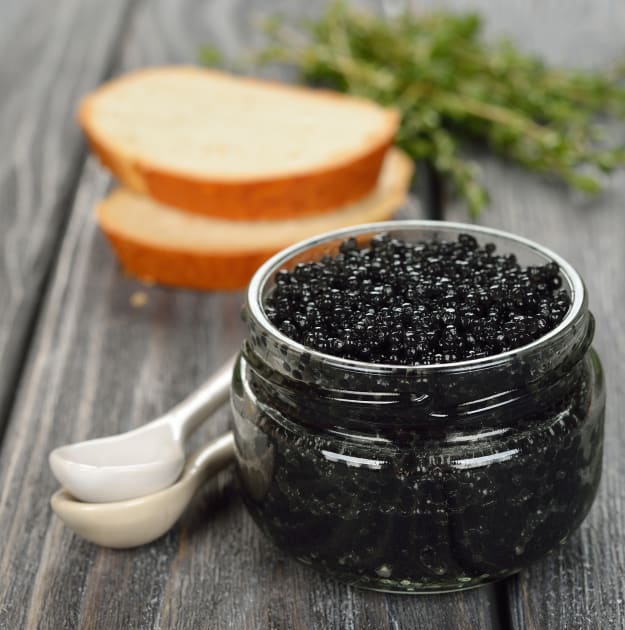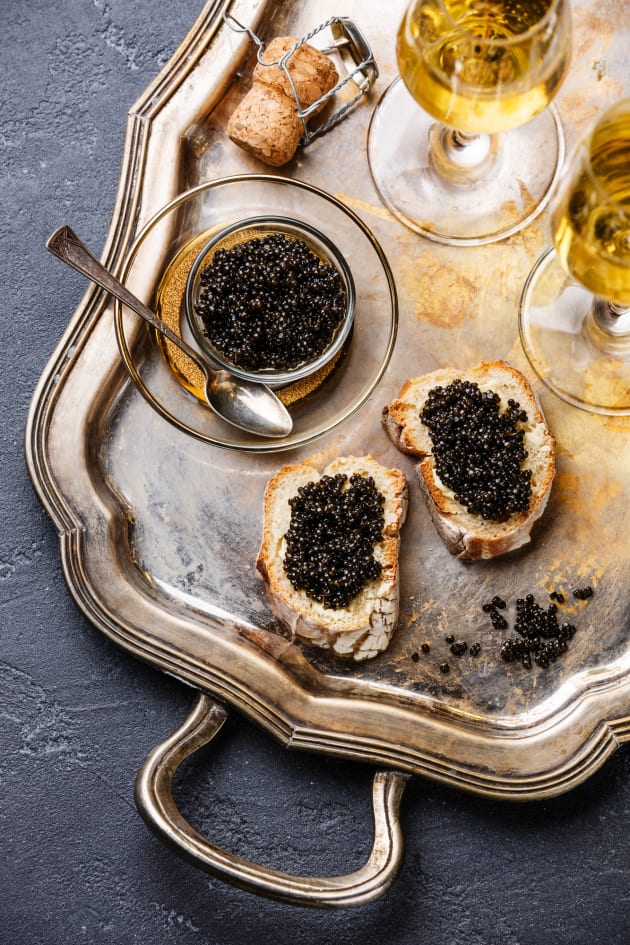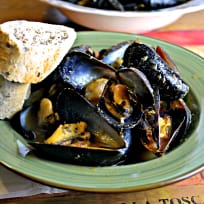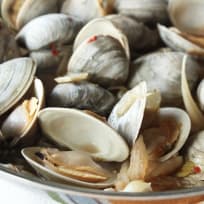What is Caviar Made Of?
Christine AlburyWhat is caviar made of and why is it considered to be a luxury appetizer? Find out more about this delicious and decadent treat
If you've ever wondered 'what is caviar made of' then this is the article for you! We will take a look at the different varieties available, how they taste and how to serve them.
What is caviar?
Put simply, caviar is fish eggs, also known as roe. But caviar doesn't come from just any old fish - true caviar comes from fish in the sturgeon family.
The eggs are unfertilized and salt-cured.
Harvesting and curing the eggs to produce caviar is time- and labor- intensive, and the demand for caviar is always greater than the supply. This makes it an extremely expensive food and is why caviar is considered a delicacy.
It is graded according to factors like the size, flavor and texture of the eggs.
What does caviar taste like?
The taste of caviar can vary somewhat from one type to another, but in general it has a delicate, slightly briny, slightly fishy flavor and is both buttery and nutty, with a taste that some people compare to hazelnuts.
One of the most interesting things about caviar is its texture. The eggs should burst in your mouth - a phenomenon known as the 'Caspian Pop'.
Not only does caviar taste good, it's healthy too and is a great source of protein, iron and vitamin B12.
What types of caviar are there?
Beluga - this is the most prized variety, and also the rarest and most expensive. You don't see it very often in the US because of various regulations and fishing restrictions. It tends to be rated by color, with the lighter color considered to be the best (even though it doesn't really taste much different). It can range in color from pale grey to very dark, which is why it is sometimes known as black caviar. Beluga caviar hardly has any fishy flavor at all.
Kaluga - this is considered the best alternative to beluga in the US. Like beluga, it has a buttery and delicate flavor and texture and is only slightly salty.
Osetra - slightly smaller than beluga, osetra caviar has a nutty, salty taste and ranges from golden to brown in color (lighter eggs indicate an older fish).
Sevruga - this is a popular type of caviar, with a wonderful texture that pops in your mouth and a strong, buttery flavor. The eggs are small and grey in color.
How to serve and store caviar
Because caviar is such an expensive food and with such a delicate flavor, it is best served very simply so that you can really appreciate its taste. The simplest way of all is to serve it raw, on a bed of ice, with a caviar spoon.
Caviar spoons are usually made of either pearl or bone. Silver or steel spoons can oxidize the caviar and give it a metallic taste.
A popular alternative is to serve caviar on Russian pancakes or blini, along with a blob of soured cream or creme fraiche.
Store leftover caviar in the coldest part of your fridge for 2 to 3 days - but remember that caviar is best eaten as fresh as possible, because it gets saltier as it ages.
If real caviar is beyond your budget, why not try this fun alternative - Texas caviar (hint - it's nothing like the real thing and isn't even seafood, but still yummy!)
And if you're a real seafood fan, check out these recipes for Potted Shrimps, Gluten Free Clam Chowder and Crispy Crab Cakes.










